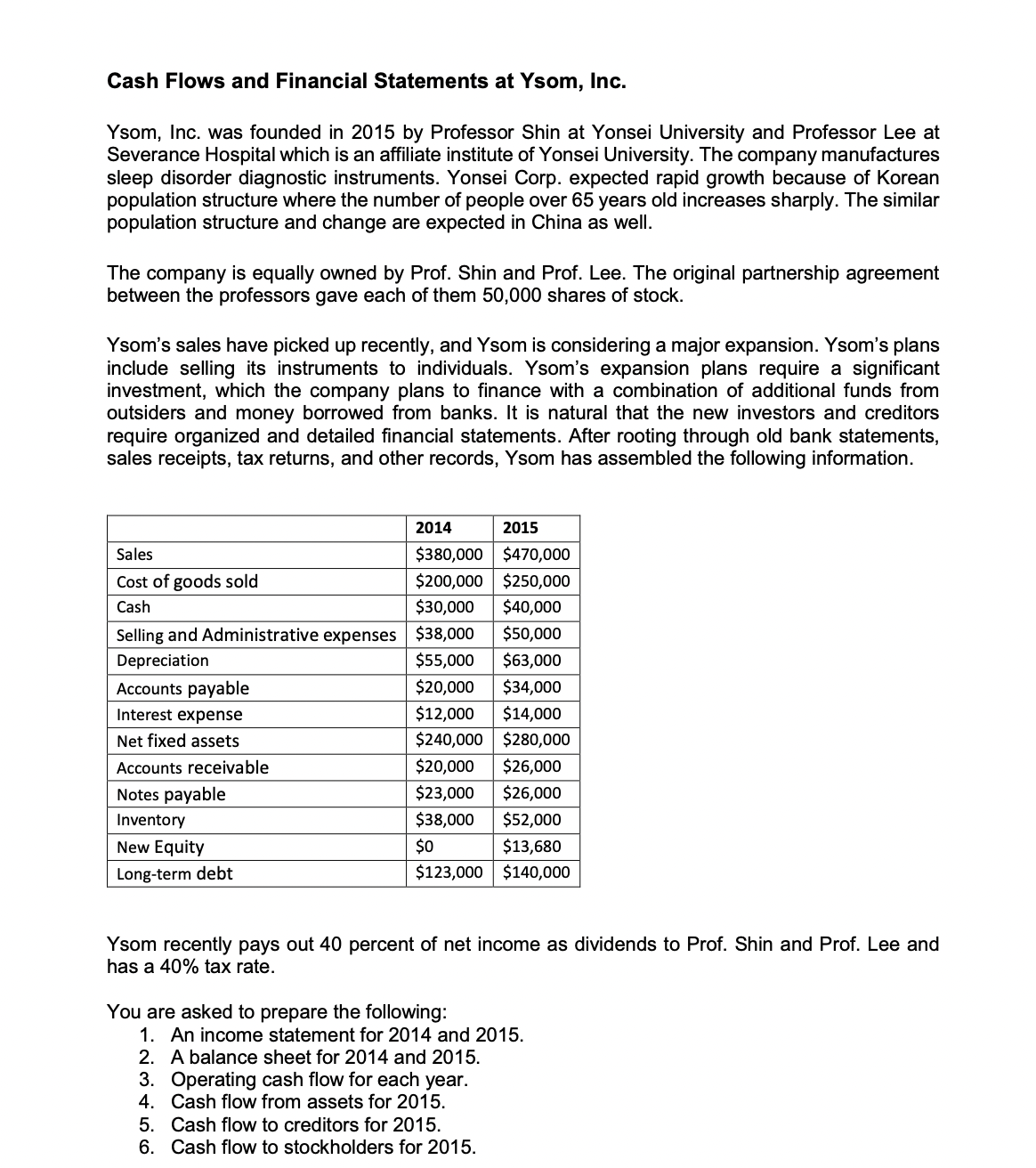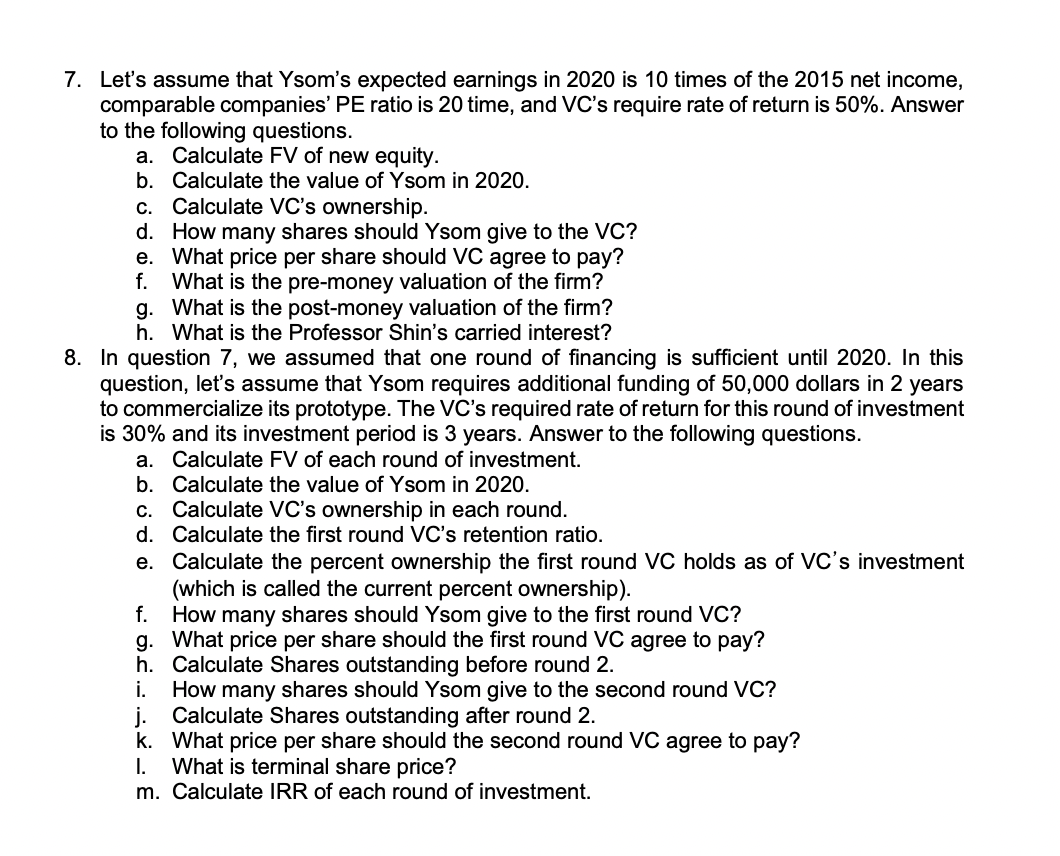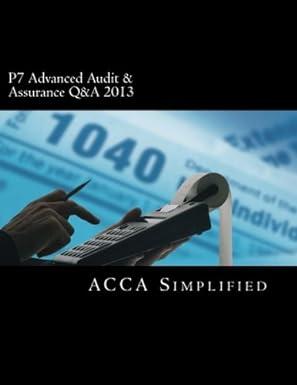Answered step by step
Verified Expert Solution
Question
1 Approved Answer
Cash Flows and Financial Statements at Ysom, Inc. Ysom, Inc. was founded in 2015 by Professor Shin at Yonsei University and Professor Lee at Severance

 Cash Flows and Financial Statements at Ysom, Inc. Ysom, Inc. was founded in 2015 by Professor Shin at Yonsei University and Professor Lee at Severance Hospital which is an affiliate institute of Yonsei University. The company manufactures sleep disorder diagnostic instruments. Yonsei Corp. expected rapid growth because of Korean population structure where the number of people over 65 years old increases sharply. The similar population structure and change are expected in China as well. The company is equally owned by Prof. Shin and Prof. Lee. The original partnership agreement between the professors gave each of them 50,000 shares of stock. Ysom's sales have picked up recently, and Ysom is considering a major expansion. Ysom's plans include selling its instruments to individuals. Ysom's expansion plans require a significant investment, which the company plans to finance with a combination of additional funds from outsiders and money borrowed from banks. It is natural that the new investors and creditors require organized and detailed financial statements. After rooting through old bank statements, sales receipts, tax returns, and other records, Ysom has assembled the following information. Ysom recently pays out 40 percent of net income as dividends to Prof. Shin and Prof. Lee and has a 40% tax rate. You are asked to prepare the following: 1. An income statement for 2014 and 2015. 2. A balance sheet for 2014 and 2015 . 3. Operating cash flow for each year. 4. Cash flow from assets for 2015. 5. Cash flow to creditors for 2015 . 6. Cash flow to stockholders for 2015 . 7. Let's assume that Ysom's expected earnings in 2020 is 10 times of the 2015 net income, comparable companies' PE ratio is 20 time, and VC's require rate of return is 50%. Answer to the following questions. a. Calculate FV of new equity. b. Calculate the value of Ysom in 2020. c. Calculate VC's ownership. d. How many shares should Ysom give to the VC? e. What price per share should VC agree to pay? f. What is the pre-money valuation of the firm? g. What is the post-money valuation of the firm? h. What is the Professor Shin's carried interest? 8. In question 7, we assumed that one round of financing is sufficient until 2020. In this question, let's assume that Ysom requires additional funding of 50,000 dollars in 2 years to commercialize its prototype. The VC's required rate of return for this round of investment is 30% and its investment period is 3 years. Answer to the following questions. a. Calculate FV of each round of investment. b. Calculate the value of Ysom in 2020. c. Calculate VC's ownership in each round. d. Calculate the first round VC's retention ratio. e. Calculate the percent ownership the first round VC holds as of VC's investment (which is called the current percent ownership). f. How many shares should Ysom give to the first round VC? g. What price per share should the first round VC agree to pay? h. Calculate Shares outstanding before round 2 . i. How many shares should Ysom give to the second round VC? j. Calculate Shares outstanding after round 2. k. What price per share should the second round VC agree to pay? I. What is terminal share price? m. Calculate IRR of each round of investment
Cash Flows and Financial Statements at Ysom, Inc. Ysom, Inc. was founded in 2015 by Professor Shin at Yonsei University and Professor Lee at Severance Hospital which is an affiliate institute of Yonsei University. The company manufactures sleep disorder diagnostic instruments. Yonsei Corp. expected rapid growth because of Korean population structure where the number of people over 65 years old increases sharply. The similar population structure and change are expected in China as well. The company is equally owned by Prof. Shin and Prof. Lee. The original partnership agreement between the professors gave each of them 50,000 shares of stock. Ysom's sales have picked up recently, and Ysom is considering a major expansion. Ysom's plans include selling its instruments to individuals. Ysom's expansion plans require a significant investment, which the company plans to finance with a combination of additional funds from outsiders and money borrowed from banks. It is natural that the new investors and creditors require organized and detailed financial statements. After rooting through old bank statements, sales receipts, tax returns, and other records, Ysom has assembled the following information. Ysom recently pays out 40 percent of net income as dividends to Prof. Shin and Prof. Lee and has a 40% tax rate. You are asked to prepare the following: 1. An income statement for 2014 and 2015. 2. A balance sheet for 2014 and 2015 . 3. Operating cash flow for each year. 4. Cash flow from assets for 2015. 5. Cash flow to creditors for 2015 . 6. Cash flow to stockholders for 2015 . 7. Let's assume that Ysom's expected earnings in 2020 is 10 times of the 2015 net income, comparable companies' PE ratio is 20 time, and VC's require rate of return is 50%. Answer to the following questions. a. Calculate FV of new equity. b. Calculate the value of Ysom in 2020. c. Calculate VC's ownership. d. How many shares should Ysom give to the VC? e. What price per share should VC agree to pay? f. What is the pre-money valuation of the firm? g. What is the post-money valuation of the firm? h. What is the Professor Shin's carried interest? 8. In question 7, we assumed that one round of financing is sufficient until 2020. In this question, let's assume that Ysom requires additional funding of 50,000 dollars in 2 years to commercialize its prototype. The VC's required rate of return for this round of investment is 30% and its investment period is 3 years. Answer to the following questions. a. Calculate FV of each round of investment. b. Calculate the value of Ysom in 2020. c. Calculate VC's ownership in each round. d. Calculate the first round VC's retention ratio. e. Calculate the percent ownership the first round VC holds as of VC's investment (which is called the current percent ownership). f. How many shares should Ysom give to the first round VC? g. What price per share should the first round VC agree to pay? h. Calculate Shares outstanding before round 2 . i. How many shares should Ysom give to the second round VC? j. Calculate Shares outstanding after round 2. k. What price per share should the second round VC agree to pay? I. What is terminal share price? m. Calculate IRR of each round of investment Step by Step Solution
There are 3 Steps involved in it
Step: 1

Get Instant Access to Expert-Tailored Solutions
See step-by-step solutions with expert insights and AI powered tools for academic success
Step: 2

Step: 3

Ace Your Homework with AI
Get the answers you need in no time with our AI-driven, step-by-step assistance
Get Started


